By Susan Martin, Senior Processing Archivist
Today, 9 June , marks the anniversary of a tragic day in the history of Worcester, Mass. and the surrounding areas. On this day 68 years ago, a catastrophic tornado swept across the county, causing massive damage and killing 94 people. The MHS holds a collection of 72 photographs taken by Boston photographer Alfred K. Schroeder in the aftermath of the tornado.
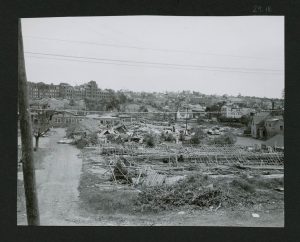
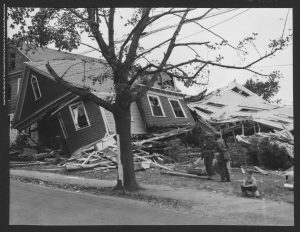
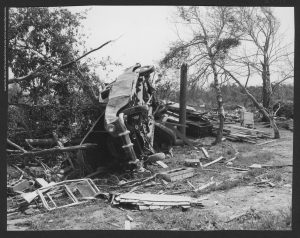
The statistics are staggering: 94 killed, 1,288 injured, 4,000 buildings damaged or destroyed, hailstones the size of baseballs, winds exceeding 300 miles an hour, debris thrown as far as Cape Cod, and over $52 million in damage (in 1953 dollars). The tornado lasted 84 minutes, mowing a path about 45 miles long from Petersham to Southborough. When it hit the county seat of Worcester—the second most populated city in Massachusetts and home to over 200,000 people at the time—the storm was a mile wide. Ten thousand residents, or 5% of the population, lost their homes that day. (Some sources put this number as high as 15,000.) The 1953 Worcester tornado still ranks as one of the worst in U.S. history.
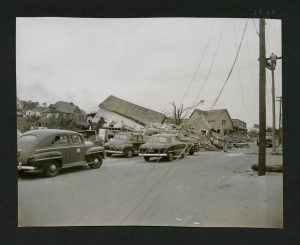
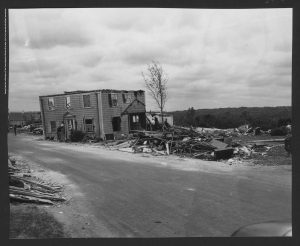
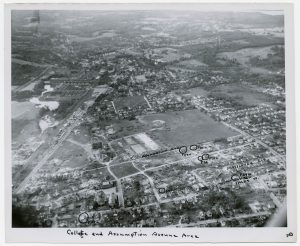
The storm must have been a terrifying sight to see. When it first touched down, eyewitnesses reported seeing three funnels simultaneously. Among the hardest hit areas were the campus of Assumption College (now the site of Quinsigamond Community College) and the Burncoat Hill and Great Brook Valley residential neighborhoods. Other, smaller tornadoes were also hitting other parts of Massachusetts and New Hampshire at the same time.
These tornadoes were part of a weather system that had moved in from the Midwest. However, forecasters had only called for severe thunderstorms in Massachusetts, so residents were taken almost completely by surprise. Because of this disaster and others, as well as technological advances, today’s meteorological warning systems are much more robust.
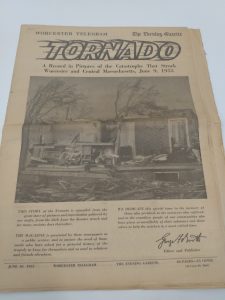
Nine days after the tornado, the Worcester Telegram and Evening Gazette issued a special edition dedicated to the storm, headlined in capital letters: “TORNADO.” This item is also part of the MHS collections. The paper contains 40 pages of pictures of the destruction, as well as horrifying personal stories. For example, a two-week-old infant named Charles C. Oslund of Holden, Mass. was killed when he was literally torn from his mother’s arms by the winds.
The Fujita scale by which we categorize tornadoes today was not introduced until 1971. Looking at the data, meteorologists have retroactively categorized the Worcester tornado as an F4, though it is generally believed to have reached F5 intensity in some locations.
See the MHS website for more of Schroeder’s striking images. The Worcester Historical Museum has also posted some terrific 1953 newsreel footage showing the extensive damage and clean-up efforts in the wake of the storm.

